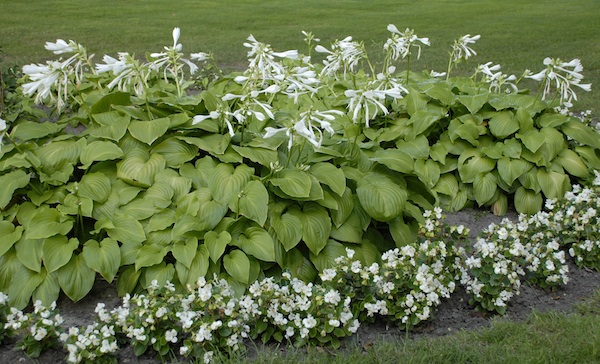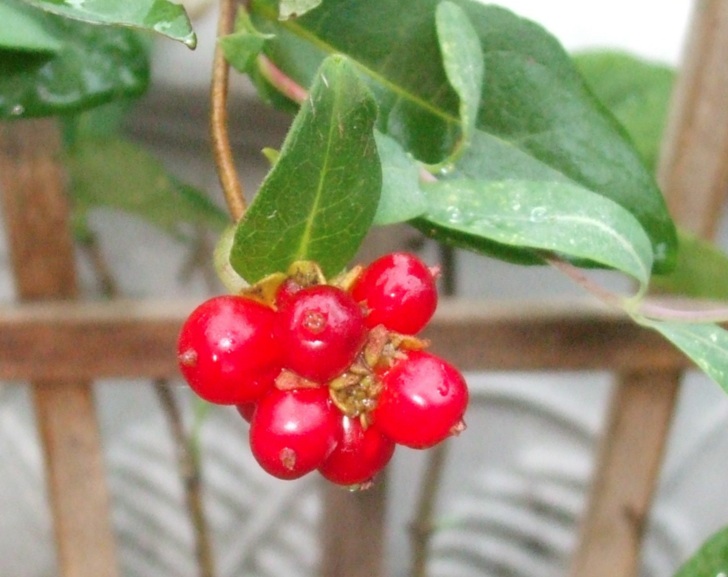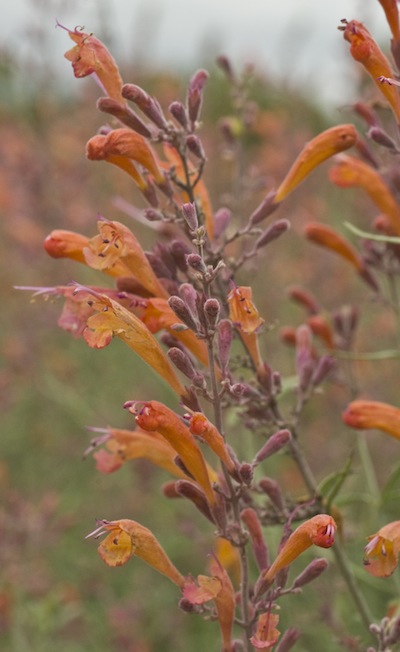
More than likely, the Hoosier Gardener’s dog dug up two of the large, late-blooming fragrant hostas. Photo courtesy PerennialResource.com
Just the other day, I realized there were plants missing in action this past summer.
A beautiful, drought-tolerant anise hyssop ‘Apache Sunset’ (Agastache rupestris) did not show up. It was planted at the edge of the driveway, close to a birdbath and a trellis, where honeysuckle grows.
I liked the sunset colors of the reliable, long-blooming flowers and the fine, blue green foliage with its minty fragrance. The hummingbirds and bees liked this perennial, also. I started it from seed probably 10 years ago.

The glossy red berries of late Dutch honeysuckle disappeared along with the plant. (C) Jo Ellen Meyers Sharp
One of the anise hyssop’s companion plants, a honeysuckle vine, also disappeared. The late Dutch honeysuckle (Lonicera periclymenum ‘Serotina’) did not show up this year. I planted it three years ago because it does not get powdery mildew like my other honeysuckle (L. x heckrottii ‘Goldflame’), which gets defoliated by the fungus disease and survived.
The late Dutch honeysuckle is fragrant like ‘Goldflame’, but the season extending attributes I wanted are the beautiful, glossy red fruit, which lingered well into winter.

Tricyrtis pokes its orchid-like blooms through the variegated foliage of Cool Splash, a native bush honeysuckle, in the shade garden. © Jo Ellen Meyers Sharp
In the shade garden, the toad lilies (Tricyrtis) didn’t even make it a full year. These were planted among the hosta because toad lilies offer orchid-like blooms late in the season.
Lastly, two large, tough, fragrant hosta (H. plantaginea) did not return. These were planted years ago in an area that stays pretty dry, so it’s possible that there was not enough moisture. Or, it could be they were dug up by the dogs on the hunt for chipmunks.
It’s also possible that the toad lilies disappeared because the dogs trample through that bed chasing squirrels.
For the honeysuckle and anise hyssop, though, I’m guessing the problem is the birdbath. The plants were right where I emptied the birdbath in winter, probably keeping the soil too wet.

Hummingbirds and bees love the drought tolerant, ‘Apache Sunset’ anise hyssop. Photo courtesy PerennialResource.com
It’s always hard to know exactly why plants fade away. Plants have a lifespan, just like people. Some, such as trees and peonies, outlive the gardener. Others, such as tulips (Tulipa), pincushion flower (Scabiosa) and daisies (Leucanthemum x superbum), tend to be short-lived perennials.
The lesson? We don’t always know why plants die, but it’s all right if they do. It’s one of the ways we learn about gardening. I’ll give all of these a second chance in my yard, too.